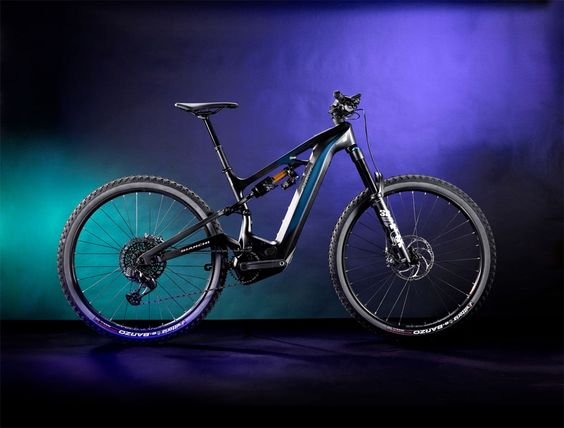
Electric vehicles (EVs) are rapidly becoming a mainstream choice for consumers, thanks to their environmental benefits, lower running costs, and advancements in technology. However, maintaining an EV differs significantly from traditional internal combustion engine (ICE) vehicles. This comprehensive guide covers essential tips and tricks to help you keep your EV in optimal condition, ensuring longevity and efficient performance.
1. Battery Care and Management
Understanding Battery Health
The battery is the heart of an EV, and its health is crucial for vehicle performance and range. Lithium-ion batteries, commonly used in EVs, degrade over time. However, proper care can slow this degradation.
Charging Best Practices
- Avoid Frequent Full Charges: Regularly charging to 100% can accelerate battery wear. Instead, aim to keep the charge level between 20% and 80% for daily use. Charge to 100% only when necessary, such as for long trips.
- Use a Level 2 Charger: While DC fast chargers are convenient, frequent use can heat the battery and contribute to faster degradation. Level 2 chargers are slower but gentler on the battery.
- Avoid Deep Discharges: Allowing the battery to drop below 10% can be harmful. Try to recharge when the battery level is around 20-30%.
- Charge During Off-Peak Hours: This not only saves money on electricity but also helps in balancing the load on the grid.
Temperature Management
Park in the Shade: High temperatures can stress the battery. If possible, park in shaded areas or use a garage to avoid direct sunlight.
Preconditioning: Use the vehicle’s preconditioning feature to warm or cool the battery before driving, especially in extreme weather conditions. This feature is available in many modern EVs and can be controlled via a smartphone app.
2. Tire Maintenance
Importance of Proper Tire Care
Tires play a vital role in the efficiency and safety of an EV. Given the heavier weight of EVs due to the battery, tire maintenance is crucial.
Tire Pressure
Regular Checks: Check tire pressure at least once a month. Properly inflated tires reduce rolling resistance, improving efficiency and range.
Manufacturer’s Recommendations: Always adhere to the tire pressure guidelines provided by the vehicle manufacturer.
Tire Rotation and Alignment
Rotation: Rotate tires every 6,000 to 8,000 miles to ensure even wear. This is particularly important for EVs with high torque, which can cause uneven tire wear.
Alignment: Regularly check and adjust wheel alignment. Misalignment can lead to uneven tire wear and affect the vehicle’s handling and efficiency.
3. Brake Maintenance
Regenerative Braking
Most EVs are equipped with regenerative braking systems, which convert kinetic energy back into electrical energy, extending the range and reducing wear on the brake pads.
Brake Pad Care
Inspection: Even though regenerative braking reduces brake pad wear, it’s essential to check the brake pads periodically for wear and tear.
Brake Fluid: Replace brake fluid as recommended by the manufacturer, typically every 2 to 3 years.
4. Software Updates
Importance of Keeping Software Up-to-Date
EVs often receive over-the-air (OTA) software updates that can enhance performance, add new features, and improve battery management.
How to Update
Automatic Updates: Ensure your vehicle is set to receive updates automatically. This usually requires a Wi-Fi connection.
Manual Checks: If your vehicle doesn’t support OTA updates, visit the dealership for regular updates.
5. Cooling System Maintenance
Battery Cooling
Many EVs use a liquid cooling system to maintain optimal battery temperature. Regular checks and maintenance of this system are crucial.
Coolant Level
Inspection: Regularly check the coolant level and refill it if necessary. Use the coolant specified by the manufacturer to avoid damage.
Replacement: Replace the coolant as per the manufacturer’s schedule, usually every 50,000 miles.
6. Cabin Air Filter and HVAC System
Cabin Air Quality
The cabin air filter ensures that the air inside the vehicle is clean and free from pollutants.
Filter Replacement
Regular Replacement: Replace the cabin air filter every 15,000 to 30,000 miles, depending on driving conditions and manufacturer recommendations.
HVAC Maintenance: Periodically check the HVAC system for any issues, especially if the vehicle has been exposed to extreme conditions.
7. General Vehicle Care
Exterior and Interior Cleaning
Exterior: Wash the car regularly to remove dirt and contaminants that can damage the paint. Use a ceramic coating or wax to protect the paintwork.
Interior: Clean the interior regularly, especially high-touch areas like the steering wheel, door handles, and touchscreen.
Underbody Protection
Rust Prevention: If you live in an area with harsh winters or salty roads, consider applying an underbody sealant to prevent rust.
8. Storage Tips
Storing Your EV
If you plan to store your EV for an extended period, take the following precautions:
Charge Level: Store the vehicle with a battery charge level between 50% and 80%.
Location: Store in a cool, dry place to avoid temperature extremes.
Disconnect the 12V Battery: If storing for a very long period, disconnect the 12V battery to prevent it from draining.
9. Routine Inspections and Professional Maintenance
Scheduled Maintenance
Follow the Schedule: Adhere to the maintenance schedule provided in the owner’s manual. Regular check-ups ensure the vehicle operates efficiently and safely.
Professional Service: While EVs have fewer moving parts than ICE vehicles, it’s still essential to have them inspected by certified technicians familiar with EV systems.
DIY Maintenance
For those comfortable with basic vehicle maintenance, tasks such as checking fluid levels, tire pressure, and replacing air filters can be done at home. However, complex issues should always be handled by professionals.
10. Common Myths and Misconceptions
Myth: EV Batteries Need to Be Fully Drained Before Charging
Reality: Modern lithium-ion batteries do not suffer from the “memory effect.” It’s best to avoid deep discharges.
Myth: EVs Don’t Require Maintenance
Reality: While EVs require less maintenance than ICE vehicles, regular checks and maintenance are still necessary for optimal performance and longevity.
Maintaining an EV involves understanding its unique requirements and adhering to best practices. By following these essential tips and tricks, you can ensure your EV remains in excellent condition, providing a reliable and efficient driving experience. Remember, regular maintenance not only extends the life of your vehicle but also enhances its resale value. Stay informed, stay proactive, and enjoy the benefits of your electric vehicle.
ALSO READ: Top 10 Minivans for Large Families







